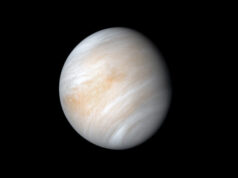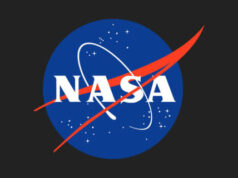Infrared dark clouds (IRDCs) are dark patches of cold dust and gas seen in the sky against the bright diffuse infrared glow of warm dust in our galaxy. These IRDCs, massive and rich in molecules, are natural sites for star birth—one of the main reasons why astronomers are actively studying them. IRDCs were first detected by two early space infrared missions, the Infrared Space Observatory and the Midcourse Space Experiment, but the IRAC camera on Spitzer revolutionized the field with its dramatically enhanced sensitivity and spatial resolution. IRAC had completed several surveys of the Milky Way before being shut off last February, and astronomers have been using the infrared images to identify and analyze the characteristics of IRDCs. The Submillimeter Array and ALMA facilities, operating with high sensitivity and resolution at submillimeter wavelengths where the cold molecular gas can be characterized, have enabled astronomers to follow up on these newly discovered sources and to determine the gas temperatures, densities and motions, leading to advances in our understanding of the earliest stages of star formation in these stellar nurseries.
One issue constraining research has been the lack of an up-to-date catalog of IRDCs. There are three main difficulties: IRDC sizes can vary greatly, from those that are very extended (more than a light-year in size) to others that are over one hundred times smaller (and of course their distances are key to their angular appearances), their shapes are usually irregular and ill defined, and not least they often are located in complex regions with hundreds of other sources. Searching the Milky Way for them has been a daunting task.
CfA astronomers Jyothish Pariu and Joe Hora have just completed a new catalog of IRDCs containing 18,845 objects extracted from the IRAC infrared images using a new computer algorithm they developed that uses contour finding and so-called neural network methods. The technique scans the images for the clouds’ dark edges and closed contours, and evaluates the reliability of the detections in an automated, objective technique that could be extended to use with other surveys. The results of the new catalog are in good agreement with earlier findings, but in addition to finding many more objects the new catalog contains more IRDCs in low-contrast regions and also confirms (as expected) that many of the previously identified IRDCs are actually comprised of two or more smaller objects.
Provided by: Harvard-Smithsonian Center for Astrophysics
More information: Jyothish Pari et al. A Semi-automated Computational Approach for Infrared Dark Cloud Localization: A Catalog of Infrared Dark Clouds. Publications of the Astronomical Society of the Pacific (2020). DOI: 10.1088/1538-3873/ab7b39
Find your dream job in the space industry. Check our Space Job Board »
Image: A false-color infrared image of the Infrared Dark Cloud called “the Snake” as seen by the IRAC camera on the Spitzer Space Telescope. Astronomers have produced a new catalog of IRDCs from IRAC’s sky survey images using a new computational search-and-detection algorithm. (Blue dots are stars relatively undimmed by dust, while the red dots are young stars embedded in the cloud).
Credit: NASA, JPL-Caltech/S. Carey (SSC/Caltech)











